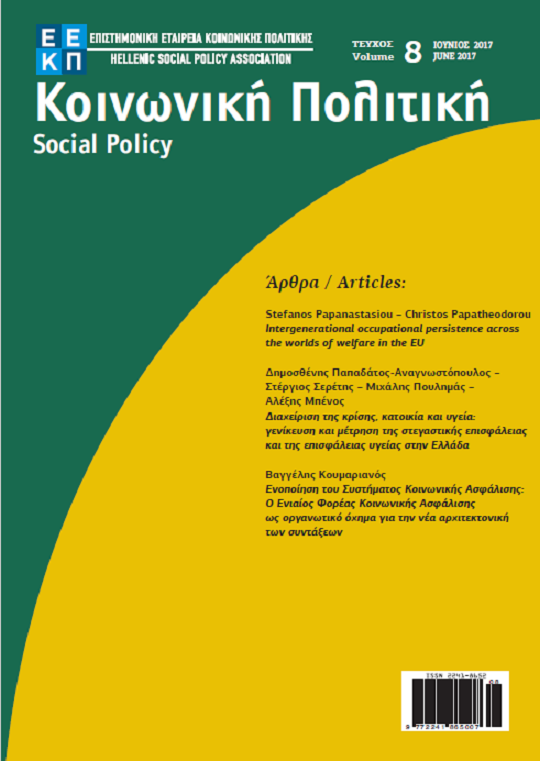Intergenerational Occupational Persistence across the Worlds of Welfare in the EU
Аннотация
This paper investigates the intergenerational persistence in the occupational status across the four EU welfare regimes. Utilizing EU-SILC 2005 microdata through multinomial logit models, the paper brings to the forefront the performance of different social protection systems vis-à-vis intergenerational occupational persistence. The countries of the Liberal welfare regime exhibit the highest persistence and those of the Social-democratic welfare regime the lowest one, while the countries of the Conservative-Corporatist and the South-European welfare cluster place themselves somewhere in between. These findings imply a success-story in intercepting the intergenerational persistence in occupations by the regulatory and redistributive mechanisms of the Social-democratic welfare state.
Article Details
- Как цитировать
-
Papanastasiou, S., & Papatheodorou, C. (2017). Intergenerational Occupational Persistence across the Worlds of Welfare in the EU. Κοινωνική Πολιτική, 8, 6–20. https://doi.org/10.12681/sp.14602
- Выпуск
- Том 8 (2017)
- Раздел
- Άρθρα

Это произведение доступно по лицензии Creative Commons «Attribution» («Атрибуция») 4.0 Всемирная.
Οι συγγραφείς των άρθρων που δημοσιεύονται στο περιοδικό διατηρούν τα δικαιώματα πνευματικής ιδιοκτησίας επί των άρθρων τους, δίνοντας στο περιοδικό το δικαίωμα της πρώτης δημοσίευσης. Άρθρα που δημοσιεύονται στο περιοδικό διατίθενται με άδεια Creative Commons 4.0 και σύμφωνα με την άδεια μπορούν να χρησιμοποιούνται ελεύθερα, με αναφορά στο/στη συγγραφέα και στην πρώτη δημοσίευση για μη κερδοσκοπικούς σκοπούς και με δικαίωμα τροποποίησης μόνον με παρόμοια διανομή (αν αναμείξετε, τροποποιήσετε, ή δημιουργήσετε πάνω στο υλικό, πρέπει να διανείμετε τις δικές σας συνεισφορές υπό την ίδια άδεια όπως και το πρωτότυπο).



